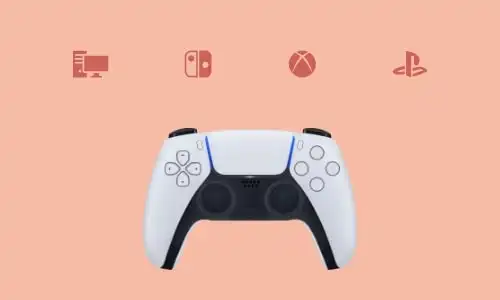
Learn the basics of
Game Design & Development
5,681
Graduates
All levels
Certified

Course details
MODULE 1
Diploma in Game Design & Development
MODULE 1
Diploma in Game Design & Development
1.Press Start...
This lesson teaches students the definition of a game. Students will be shown various examples and they will be given the opportunity to guess if it is a game based on the definition of a game. We will cover the roles of the Game Designer and Game Programmer and students will learn how much goes into making a game. At the end of the lesson, students will be tasked with thinking of a game idea (new or existing).
2.Genres in General
This lesson covers Game Genres and how they are classified. Students will learn the main game genres and how they are defined. They will then be able to identify the genres of existing games. They will also be able to classify the genre of the game idea they thought of in the previous lesson. At the end of this lesson, students will be able to create new "compound genres" by combining different game genres.
3.Discover Design
You will learn about the various techniques used in game design in this lesson. All the forms of inspiration and planning will be made apparent to you in an overview fashion. By the end of this lesson, you will have made a basic game design from the idea you came up with in lesson one!
4.Let's Talk Teams
This lesson explains the importance of working in teams when making games. Students will learn the different kinds of teams and how they communicate with one another to make games. Students will also have to think about the kind of team they would like to work in and what role they think would fit them best.
5.Making Mechanics
This lesson covers game mechanics. You will learn the basics of game mechanics and how they differ from game rules. You will be tasked with thinking of the mechanics involved in each of a few example games shown to you. By the end of the lesson, you will think of the mechanics you want to use in your game idea.
6.Disciplined Development
In this lesson, we cover the Software Engineering Discipline and how it connects to game design and development. You will learn the best practices of the industry while taking your first steps down the path to a prototype of your game.
7.Prepare for Prototyping
This lesson will teach students the theory on making prototypes and, by the end of the lesson, will apply this knowledge to make a prototype of their games. They will learn the different kind of prototypes and when it is appropriate to make them. This stage in the development process is crucial to prevent major design mistakes later in development.
8.Game Engines Galore
This lesson shows you all the most popular game engines available (and some more obscure ones). You will learn the pros and cons of each of the major game engines. By the end of this lesson, you will be familiar with the reason we will start off with the Godot Game Engine, and you will have learned how to acquire and install it on your computers.
MODULE 2
Intermediate in Game Design & Development
MODULE 2
Intermediate in Game Design & Development
1.Good to Godot
This lesson exposes you to the Godot Game Engine's Interface. You will become familiar with the various panels, nodes, components and other elements that work together to make the engine work. You will learn the best way to set up a prototype using the principle of "The Minimum Viable Game". By the end of this lesson, you will have set up the scene of their prototype and will be ready to move onto scripting in the next lesson.
2.Start Scripting
After setting up your scene in the previous lesson, you will learn how to make things happen in your scene by writing a script to control your player's proxy. You will copy code from the video, evaluating the logic of the script and add in your own script code to advance the capabilities of the player.
3.Control Your Camera
You will learn about the way cameras shape gameplay and how different camera control techniques fit in with different genres. You will compare these techniques against one another and choose the correct technique for your prototype. After choosing your preferred camera control technique, you will program and script the controls for the camera for your prototype.
4.Play Your Game!
While the lesson title sounds fun, playtesting is an important part of the development lifecycle. You will learn how to play your game in two ways. You will play your game to identify any errors in it, but also how to play your game from the player's perspective. You must be able to distinguish these two playstyles and use them both to enhance your prototype. By the end of this lesson, you will have played your game from both perspectives and compiled a list of the various criticisms you have with your game's mechanics.
5.Dare to Debug
Debugging is an essential tool which every programmer needs to use to fix the mistakes made in the coding process. This lesson covers the different techniques you can use to find errors and also teaches you how to look for answers to your problems. You will be able to search for answers and fix your errors by the end of this lesson.
6.More on Mechanics
The way game mechanics come together to make a game work is a complex process. In this lesson, you will learn more about game mechanics so they can criticise your prototype's mechanics with more confidence. You will be able to separate the mechanics that work from the mechanics that do not (based on the criteria learned in the lesson). By the end of the lesson, you will have a new set of mechanics for your prototype which you will put through the test and debug phases again.
7.Regal Repetition
You will repeat the steps you learned in the previous lessons to refine your game mechanics. This refinement relates to the correctness of your code and also to the viability of the Game Mechanics in your prototype's design (consistency, fun, sensible, etc.). You will repeat the process of refinement until you are satisfied with the way your game is played. Once satisfied, you will move onto the final lesson in module 2.
8.Scope Creep and Feature Freeze
Scope creep is a real and dangerous threat to game development. This lesson teaches you about the different ways scope creep can occur and how it can affect your game's development. You will also learn about feature freeze as a mitigation strategy against scope creep. By the end of this lesson, you will integrate feature freeze into your game's design and will begin module 3 with a finalised game design.
MODULE 3
Advanced in Game Design & Development
MODULE 3
Advanced in Game Design & Development
1.All about AI
This lesson is the first of 2 lessons about Artificial Intelligence. This intermediate-level lesson covers the more basic aspects of Artificial Intelligence in games. It covers the minimum level of AI required for the game you wants to make. In this lesson, you will learn the various types of Artificial Intelligence in games as well as some of the theory and put this into practice by creating the AI for agents in your game. By the end of the lesson, you will have programmed (planned) the AI for your game and will be ready to move onto the next lesson where you will script it.
2.Some More Scripting and Scores
Now that you have programmed your AI successfully, it is time to write the script for these agents. You will write the script to control the AI Agents in your game and then test and debug your logic until you are satisfied. Once you have finished scripting the AI you will learn about the usefulness of scores and how it plays an important role in keeping players engaged with the game.
3.Theme and Narrative After Mechanics
The purpose of this lesson is to teach you the importance of getting the Minimum Viable Game up and running before choosing a theme or narrative. In many cases, game mechanics can even help to establish a narrative. You will learn about some of the techniques used for narrative in games and then you will choose your own theme and narrative for their games.
4.Assets: Models and Animation
You will be shown a selection of sources for 3D models to use in their games. These models are sometimes free and sometimes for sale. You must decide which assets to acquire for your games on your own. You will also be shown a few applications and websites which offer quick and easy animation services for their 3D models and you will have the choice of which of these options to use. At the end of this lesson, you will learn how to import these assets into your game and put them to use.
5.Assets - Sound Effects and Music
You will be shown a selection of sources for sound effects and music to use in your games. These assets are sometimes free and sometimes for money and you must decide which assets to acquire for their games on their own. You will also be shown a few applications and websites which offer quick and easy sound effects and music generation services. You will have the choice of which of these options to use. At the end of this lesson, you will learn how to import these assets into your game and put them to use.
6.Assets: Textures and Materials
There are a variety of websites that offer materials free of charge. You will learn about these sources and how to obtain the materials you need for your games. You will also learn about texture painting software and Physics-Based Rendering (PBR) material creation software which you can learn about to enhance your content creation skills.
7.Juice and Polishing
Juicing is a broad term given to the addition of decoration and embellishments. You will learn how to add juice to your game and also how to polish your gameplay in order to finalise it for the build process.
8.User Interfaces, Platforms and Building the Game
This is the last stage for you in the process of developing your first game. You will learn about User Interfaces (UI) and how to create them in Godot. The last thing you will do in this module is optimise your game for the platform you want to target and then you will build your game.
